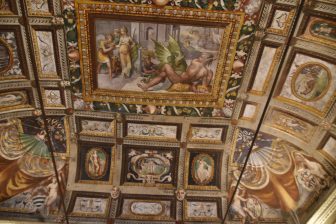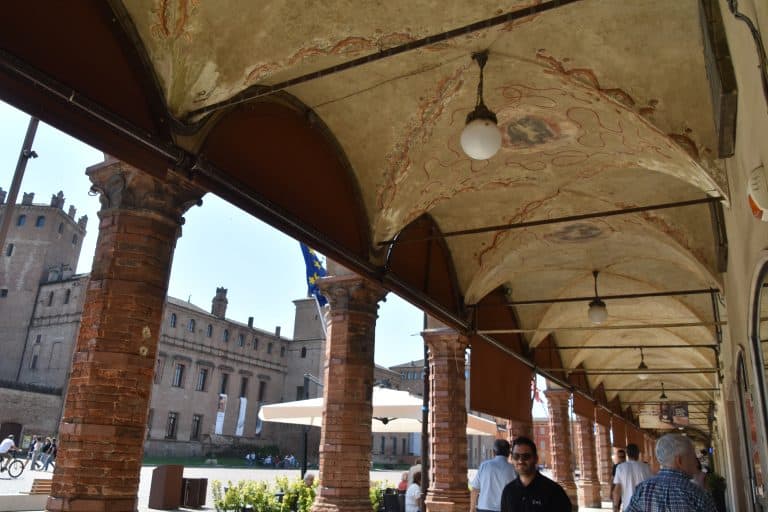
[June 2025] About a 20-minute drive west of Correggio, a town in the Emilia-Romagna region of Italy, lies the town of Carpi.
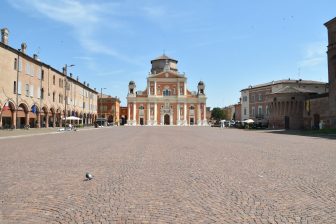
On our second day, we visited the town.
I first learned of the town of Carpi many years ago, when I heard a news story about a foreign tourist who wanted to go to Capri but accidentally entered Carpi into his navigation system and ended up in the town, looking completely bewildered.
I remember thinking how stupid he was, but also being amazed that there was a town with that name.
Carpi is known for its vast square, Piazza del Martiri.
At 16,000 square meters, it’s apparently the third largest in Italy.
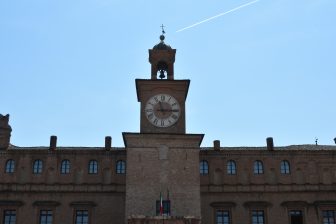
It’s not so much wide as it is long, with the Carpi Cathedral at its eastern end, a palace to the north, and buildings lined with porticos to the south.
The Pio family, who ruled here during the Renaissance, apparently built this large square to demonstrate their power.
However, within Italy, which is filled with beautiful squares, this one was merely spacious and not particularly beautiful.
The Pio family’s palace is Palazzo dei Pio, facing this square.
By chance, admission was free on the day we visited, so we decided to go inside.
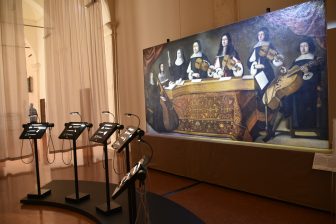
The palace was expanded and renovated in stages from the 11th to the 18th centuries, and is now a museum that was built with considerable investment.
The exterior resembles a formidable castle, but inside, there are many frescoes and many impressive rooms.
The ceilings in particular are made of wood, and there are even rooms with a slightly oriental feel.
What was interesting was, for example, that in front of a large painting of people playing some instruments, you could listen to music through headphones, which would have sounded like the music the instruments were playing.
There was also a painting with a smell mechanism.
Having said that, I checked the online information and found that this feature isn’t a permanent fixture, but rather a temporary exhibition.
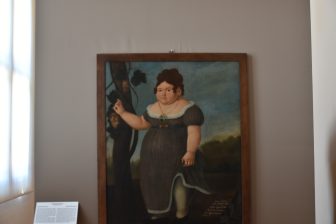
I was impressed by this great idea.
Then, there was a painting which at first glance, I thought it was by the Colombian painter Botero.
But it was actually a painting by a local artist named Ippolito Bianchini Clarlini, depicting the daughter of a local dignitary.
The painting dates to 1815, long before Botero.
I wonder if Botero saw this somewhere and used it as inspiration?
The upper floors of the palace were lined with historical exhibits focusing on local industries.
Apparently, straw hats and knitwear were the main industries in the area.
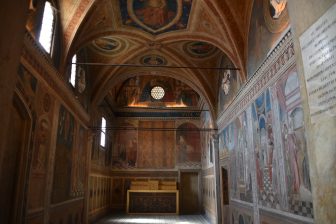
The museum was even more fulfilling than I expected.
According to the online information, there’s also a memorial museum on the ground floor dedicated to forced deportation and state persecution.
This museum apparently records the people who were forcibly interned by the Nazis during World War II.
We missed it, though.
The reason we hurried out of the palace without noticing this was because our restaurant reservation was approaching.

